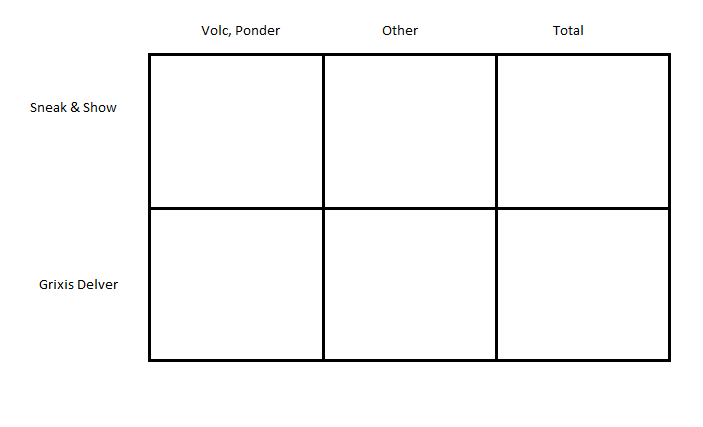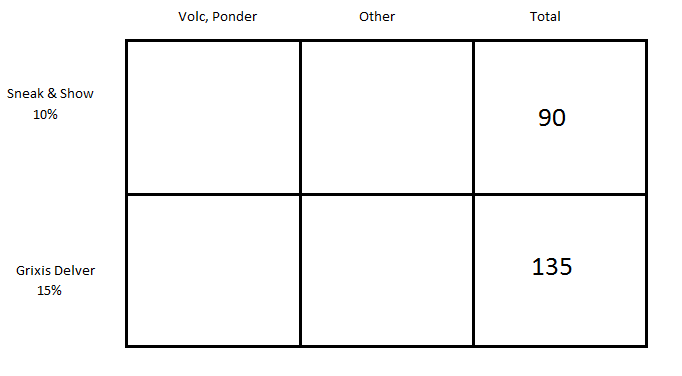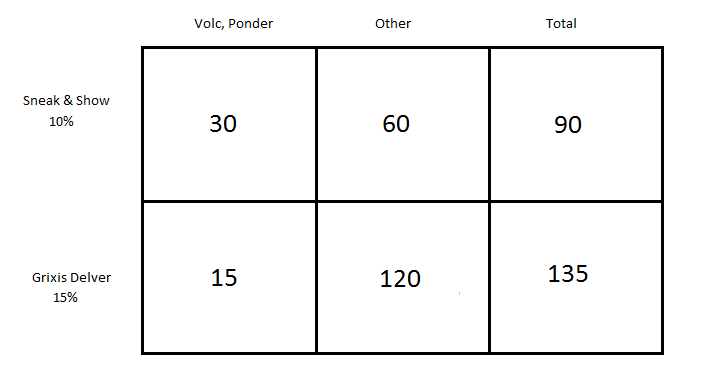The Legacy format is home to some of the most powerful strategies in the history of the game. Being caught off guard can mean losing the game as early as turn one. Knowing what deck your opponent is playing lets you make better and more informed decisions. It helps you decide whether you should tap out or keep up mana for a counterspell. It tells you whether or not you need to play around Wasteland. The sooner you figure out what you’re up against the better. If you wish to succeed in Legacy, this is a skill you have to master. I’m here to tell you how to do it.
Step 1. Preparation
The first step is the one that happens before the match even begins. Familiarize yourself with the format. You don’t need to examine every single list or look at all the tournament results, but you do need to know what the most common decks are and what stock versions of those decks look like. A lot of this knowledge comes with time and experience, but you can make a dedicated effort to improve in this area. Study lists that perform well in tournaments. In particular you should study their mana bases. Which fetchlands are they playing? How do they normally sequence their land drops? The lands people play are your earliest clues to what they are playing. Knowing how to interpret them is key to figuring it out before it’s too late.
Step 2. Narrow it down
Every play your opponent makes is a potential source of information. If your opponent leads on a basic Island you can eliminate all the decks that don’t have Island from the list of decks your opponent could be playing. If they then play a Ponder you can narrow it down further, and so on.
Step 3. Analyze their play
Look at it from their perspective. What would have to be true for it to make sense? You know they kept their hand for a reason. That they played that land and that spell for a reason. They did those things rather than anything else, meaning that at least from their point of view it was the best play they could make.
Step 4. Bayesian reasoning
Ah, we finally get to the fun part. It’s time for what you’ve all been waiting for: math! Steps one through three are our data points. They provide us with the numbers. Step four shows us how to organize the information at our disposal and enter the variables into the equation.
 The upper row is all the scenarios where our opponent is on Sneak & Show.
The upper row is all the scenarios where our opponent is on Sneak & Show.
The bottom row is all the scenarios where our opponent is on Grixis Delver.
The left column is all the scenarios where our opponent leads on Volcanic Island into Ponder.
The middle column is all the scenarios where our opponent leads on something else.
Let’s assume that your opponent’s turn one play is Volcanic Island into Ponder. You know that Grixis Delver and Sneak & Show are two of the most popular decks in the format, and they both play those cards. (In reality there are many different decks they could be playing, but for the sake of simplicity, pretend that these are the only ones.) What is the probability that they are on one deck rather than the other?
Because you completed step one you know what percentage of the metagame both decks compose, giving you your first point of data. Let’s assume that Sneak & Show is 10% of the metagame and Grixis Delver is 15%, meaning Grixis Delver is 50% more common. Now we simply enter these numbers into the grid.
Assuming a population of 220 you get 90 copies of Sneak & Show and 135 of Grixis Delver. (You can choose any number you like here. I chose 220 to retain whole numbers throughout the equation.) Because of step three you also know what percentage of the time each deck leads on Volcanic Island into Ponder. Assuming that for Sneak & Show that number is one third of the time, we enter the number 30 into the upper left square, because 90/3=30. (Once again, I chose these numbers for the sake of simplicity, the real numbers are likely much lower.) We then proceed to do the same for Grixis Delver. Assuming that for Grixis Delver that number is one ninth of the time gives us a grid that looks like this:
Next we look to the leftmost column. If we want to know the probability that our opponent is on Sneak & Show we simply divide the number in the upper left square (30) by the total number in the left column (45), giving us the result of 0.67. In other words, two thirds of the time.
If we wanted to include more decks in the equation all we’d have to do is add more rows. Remember, the exact numbers aren’t what’s important here. What matters is knowing how to properly structure information so that we can draw better conclusions. This in turn helps us avoid being taken by surprise, and instead allows us to stay one step ahead of our opponent.
Step 5. Adapting to new information
I’ve lost count of how many times I’ve lost to Aluren because I put them on Shardless BUG and didn’t realize my mistake until it was too late. It’s easy to be blind to new information once you think you’ve got it all figured out, but remember that reading your opponent’s plays isn’t a process that stops after turn one. You’re doing yourself a disservice by not taking new information into account. Pay attention to what your opponent is doing—especially if it’s something other than what you were expecting.
This is particularly important because Legacy is such a diverse format. In the early turns, before you have sufficient information, you have to focus your attention on the decks that are more prevalent. But as the game progresses you gain access to more information which will either confirm or rebut your initial hypothesis. If it turns out that your initial hypothesis was incorrect it helps to be familiar with the rogue decks of the format. But you don’t have to be a seasoned veteran to gain an edge here. Simply noticing will go a long way to help you win more matches.
Last but not least, learn when to trust your instincts. Sometimes you will pick up on a small piece of information that would go unnoticed by others. These tiny details aren’t always as quantifiable, but your intuition doesn’t care about that. The way your opponent carries themself at the table, their body language, and how much time they spend thinking at different points in the game. All of these things can tell you something. When to trust your intuition and make a play based on a feeling is a tricky question, but I generally lean towards doing so. If you’re an experienced player and your mind picks up on something there is usually a reason for that, even if you don’t what that reason is just yet.
Sandro is a Magic player from Stockholm, Sweden. He’s been playing Goblins in Legacy for years. Follow him on Twitter @SandroRajalin



